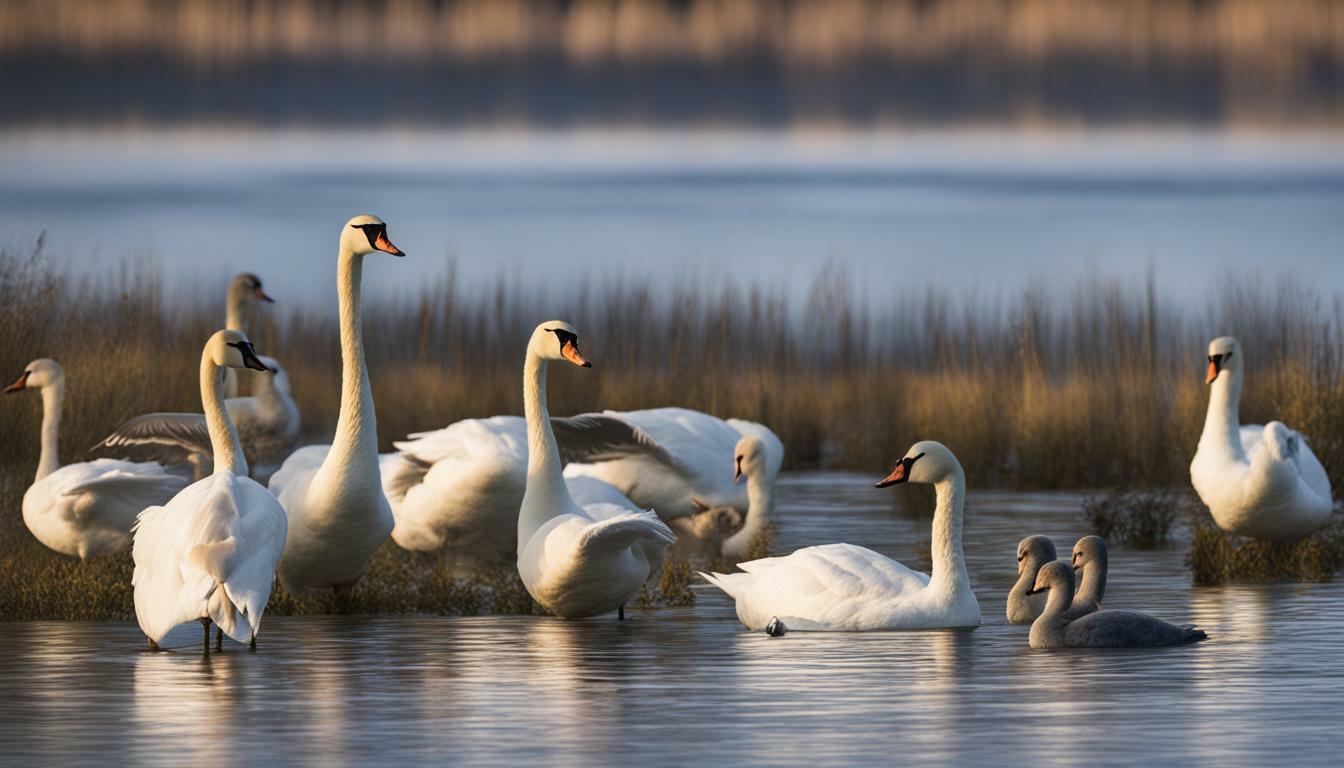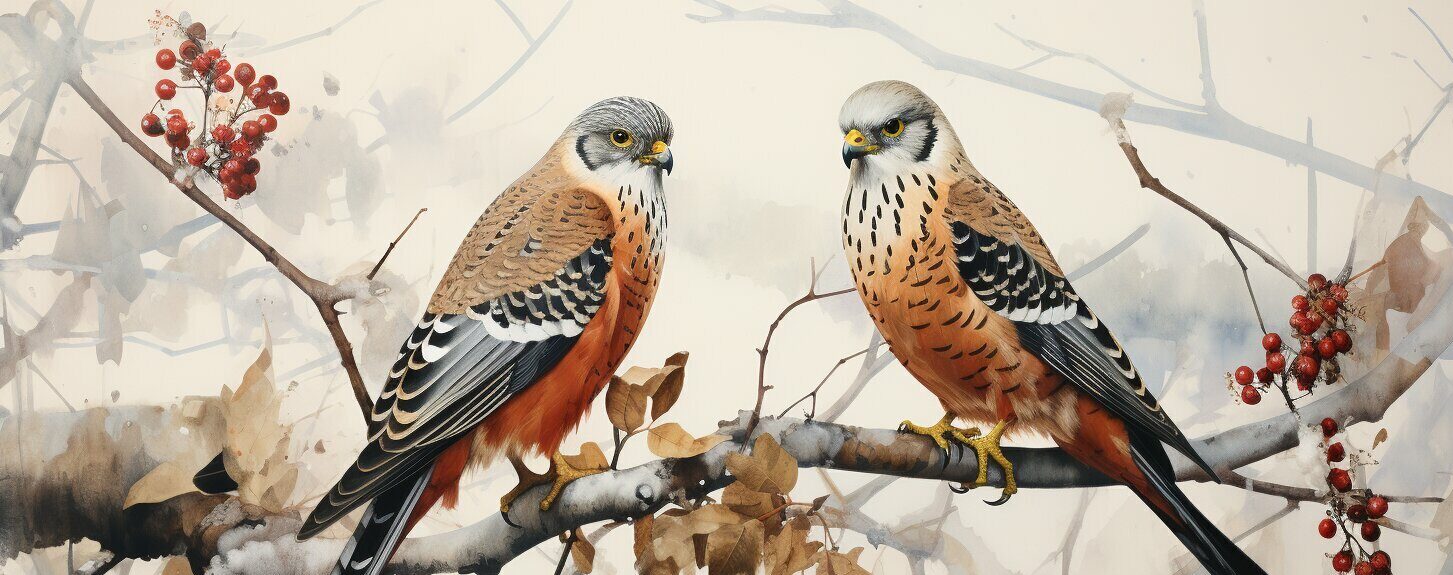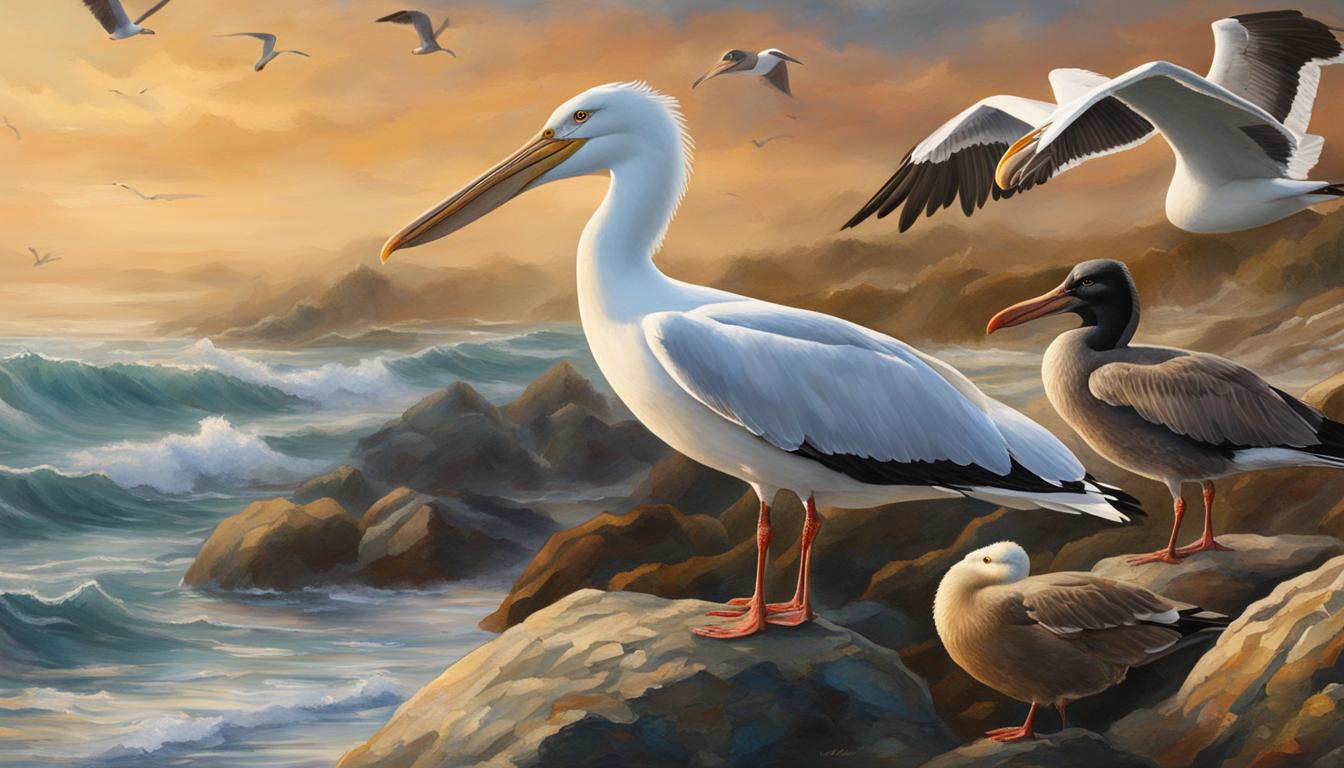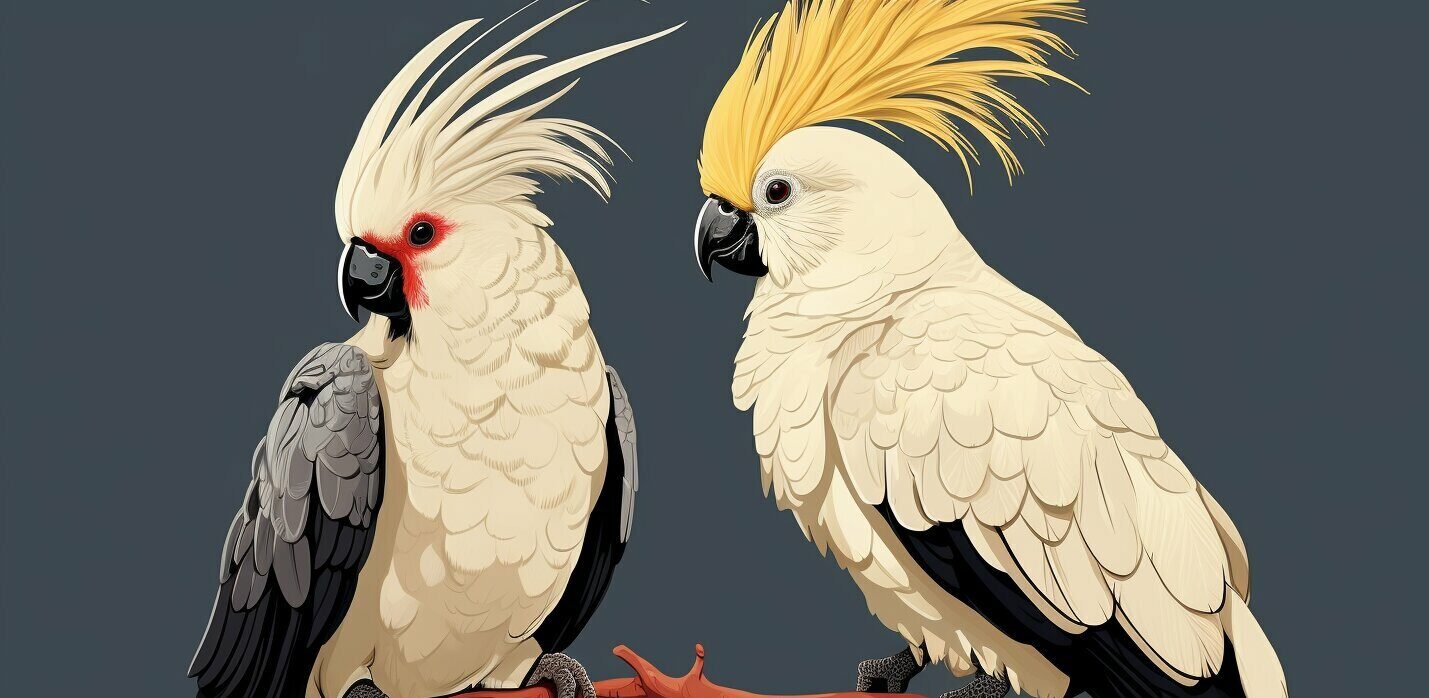Swans and geese are both waterfowl birds that belong to the Anatidae family, but they have distinct characteristics that set them apart. While they may share some similarities in appearance, behavior, and diet, there are key differences that make each species unique.
Key Takeaways:
- Swans are generally larger and have longer necks than geese.
- Swans have a signature “S” shaped neck, while geese have straighter and thicker necks.
- Swans are mostly white, while geese can be brown, blackish, or gray.
- Swans have a wingspan of up to 10 feet, while geese usually have a wingspan of 3 to 4 feet.
- Geese are more social and tend to flock together, while swans prefer to stay with their mate and young.
- Swans are omnivores and also eat mollusks, worms, fish, and frogs, while geese mainly feed on vegetation.
- Swans are commonly found in cold climates, while geese can adapt to various climates.
- There are more species of geese than swans, with geese being more widespread.
Despite their similarities, swans and geese have distinct characteristics that differentiate them from each other. Exploring these differences can provide a deeper understanding of these beautiful waterfowl birds.
Physical Appearance and Size Differences
Swans and geese differ in their physical appearances and sizes, with swans being larger and having longer necks compared to geese. Swans belong to the Cygnus genus and are known for their graceful elegance. They have distinct “S” shaped necks that add to their majestic presence. Geese, on the other hand, have straighter and thicker necks. While swans are mostly white, geese exhibit more color variation, ranging from brown and blackish to gray.
The size difference between swans and geese is also notable. Swans have a wingspan that can reach up to 10 feet, making them one of the largest flying birds. Geese, in comparison, usually have a wingspan of 3 to 4 feet. The larger size and longer neck of swans contribute to their striking appearance, making them a captivating sight in lakes and rivers.
When it comes to waterfowl birds, swans and geese are both unique in their physical characteristics, setting them apart from each other. Swans’ larger size and elegant necks, along with their predominantly white plumage, make them distinguishable from geese. Understanding these physical appearance and size differences helps to appreciate the diversity within the Anatidae family.
| Swans | Geese |
|---|---|
| Appears mostly white | Varies in color (brown, blackish, gray) |
| Longer and graceful necks | Straighter and thicker necks |
| Wingspan up to 10 feet | Wingspan of 3 to 4 feet |
Behavioral Contrasts
Swans and geese exhibit contrasting behaviors, with geese being more social and flocking together, while swans typically prefer to stay with their mate and young. Geese are known for their strong sense of community and form large groups, called gaggles, which provide safety and support. They are highly social creatures, often seen honking and communicating with each other in flight or on the ground. Geese even take turns leading the flock when flying, using their V-formation to take advantage of aerodynamic benefits.
On the other hand, swans are more solitary birds and are typically seen in pairs or small family groups. They form long-term monogamous relationships and stay with their mate throughout the year. Swans are protective of their offspring and create nests in secluded areas, away from other bird species. They can become territorial when threatened and will defend their territory and young vigorously.
This distinct contrast in behavior reflects the different social needs and adaptations of swans and geese. While geese thrive on the safety and support of a large flock, swans prioritize the close-knit bonds within their own family unit.
Swan vs. Goose – Behavioral Traits
To summarize:
- Geese are highly social and flock together, while swans prefer to stay with their mate and young.
- Geese communicate through honking and have a strong sense of community, often flying in V-formation.
- Swans form long-term monogamous relationships, stay in small family groups, and protect their offspring.
| Behavior | Swans | Geese |
|---|---|---|
| Social Behavior | Less social, prefer small family groups | Highly social, form large flocks |
| Communication | Less vocal, communicate through various body movements | Honk frequently to communicate with flock members |
| Protectiveness | Highly protective of mate and young, can become territorial | Protective of the flock as a whole, take turns leading the V-formation |
In conclusion, the behavioral differences between swans and geese highlight their distinct social structures and priorities. While geese thrive in large flocks, finding safety and support in numbers, swans prioritize their mate and young, forming strong family bonds. These behavioral contrasts contribute to the unique characteristics of each bird and make them fascinating to observe in their natural habitats.
Habitat and Migration Patterns
Swans and geese can be found in different habitats, but swans are more commonly found in cold climates, while geese have the ability to adapt to various climates. Swans thrive in regions with cooler temperatures and are often seen in high-latitude areas such as northern Europe, North America, and Siberia. They are known to inhabit lakes, ponds, rivers, and coastal regions. Some species of swans, like the tundra swans, migrate annually to warmer climates during the winter months in search of food and more favorable conditions.
On the other hand, geese have a remarkable ability to adapt to different environments, which allows them to inhabit a wide range of habitats around the world. From temperate regions to the Arctic tundra, geese can be found in various ecosystems such as wetlands, grasslands, and agricultural fields. They are highly migratory birds, and their migration patterns are influenced by food availability and weather conditions. Geese often form large flocks and undertake long-distance migrations, with some species traveling thousands of miles to reach their breeding grounds or wintering sites.
In summary, while swans prefer colder climates and can be found in regions with cooler temperatures, geese are more adaptable and can be found in a wide range of habitats. Their migration patterns also differ, with swans undertaking seasonal migrations to find suitable food sources and geese embarking on long-distance journeys to reach breeding or wintering areas.
| Swans | Geese |
|---|---|
| Prefer colder climates | Adaptable to various climates |
| Found in high-latitude areas | Found in diverse ecosystems |
| Inhabit lakes, ponds, rivers, and coastal regions | Found in wetlands, grasslands, and agricultural fields |
| Migrate to warmer climates during winter | Form large flocks and undertake long-distance migrations |
Dietary Variances
Swans and geese share a mainly vegetarian diet, but swans are omnivores and also consume mollusks, worms, fish, and frogs. While vegetation forms the bulk of their diet, swans have developed the ability to diversify their food sources, allowing them to thrive in a wider range of habitats.
Both swans and geese graze on aquatic plants such as sedges, grasses, and submerged vegetation. They also feed on land, foraging for grasses, grains, and agricultural crops. Swans have a unique feeding behavior called “tipping up,” where they dunk their heads and necks into the water to reach submerged food sources. This technique allows them to access aquatic plants and small organisms near the bottom of the water bodies.
Swans’ omnivorous nature sets them apart from geese. They actively search for invertebrates like mollusks, worms, insects, and crustaceans. Swans are capable of reaching depths of up to 3 feet while foraging for mollusks and other small prey. This dietary variance enables swans to supplement their nutrition with a higher protein intake, especially during nesting and breeding seasons when their energy demands are higher.
| Swans | Geese |
|---|---|
| Vegetation (grasses, sedges, aquatic plants) | Vegetation (grasses, sedges, aquatic plants) |
| Mollusks | – |
| Worms | – |
| Fish | – |
| Frogs | – |
It is important to note that while swans and geese may have similar dietary preferences, their feeding behaviors and ability to access different food sources make them functionally distinct within their ecological niches. These variations in their diets contribute to their overall ecological roles and help shape their respective habitats.
In conclusion, while swans and geese both rely on vegetation as their primary food source, swans’ omnivorous nature allows them to have a more varied diet, incorporating mollusks, worms, fish, and frogs. This ability to adapt to different food sources contributes to their ecological success and resilience in different environments.
Conclusion
In conclusion, swans and geese, although belonging to the same family, exhibit distinct differences in their physical appearances, behaviors, habitats, and diets.
When it comes to physical attributes, swans are generally larger and have longer necks compared to geese. The graceful swans boast an “S” shaped neck, while geese have straighter and thicker necks. Swans are mostly white, while geese can be brown, blackish, or gray. Additionally, swans have a wingspan of up to 10 feet, while geese typically have a wingspan of 3 to 4 feet.
Behaviorally, geese are known for their social nature, often flocking together in large groups. On the other hand, swans are less social and tend to stay close to their mate and young. These behavioral differences highlight the contrasting social tendencies of these waterfowl birds.
When it comes to their habitats, swans are commonly found in cold climates, while geese are more adaptable and can thrive in a variety of climates. However, both swans and geese can be found in various habitats, including wetlands, lakes, and rivers.
As for their diets, both swans and geese primarily consume vegetation. However, swans also have an omnivorous diet, including mollusks, worms, fish, and frogs. This dietary variance sets them apart from geese, which mainly stick to vegetation.
Although swans and geese share similarities as waterfowl birds, their differences in physical appearances, behaviors, habitats, and diets make each species unique and fascinating in its own way.
FAQ
Q: What are the main differences between swans and geese?
A: Swans are generally larger and have longer necks than geese. Swans have a signature “S” shaped neck, while geese have straighter and thicker necks. Swans are mostly white, but geese can be brown, blackish, or gray. Swans have a wingspan of up to 10 feet, while geese usually have a wingspan of 3 to 4 feet. In terms of behavior, geese are more social and tend to flock together, while swans are less social and prefer to stay with their mate and young.
Q: What do swans and geese eat?
A: Both swans and geese primarily eat vegetation. However, swans are omnivores and also consume mollusks, worms, fish, and frogs.
Q: Where can swans and geese be found?
A: Swans are more commonly found in cold climates, while geese can adapt to various climates. Swans and geese may be found in different habitats, with swans often preferring colder regions.
Q: How many species of swans and geese are there?
A: There are more species of geese than swans, with geese being more widespread in different regions.
 Skip to main content
Skip to main content


